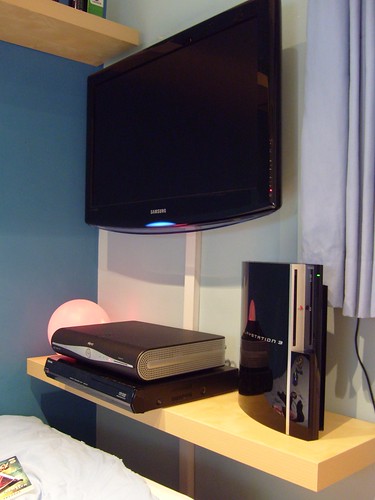
Within recent years HDMI cables have become the standard for transmitting high-definition signals from a playback device to a TV. Until 2008, television manufacturers often included only one or two HDMI input on their sets. With HDMI become more common, open HDMI ports have become a necessity. Adding an HDMI switcher to a home theater set-up allows users to use multiple HDMI devices while still only having one or two inputs on their television or AV receiver. While HDMI switchers are generally reliable, users can encounter some common problems.
High Definition Multimedia Interface, or HDMI, is a single cable with the bandwidth capacity to carry both high-definition video and uncompressed audio. HDMI offers numerous advantages over older cables, including the ability to carry audio and video with one cable, and transmitting resolutions up to 1080p.
Video of the Day
Video of the Day
HDMI Switchers
Even though HDMI offered many advantages over older cables, early manufacturers of high-definition televisions and HDMI AV receivers did not include more than one or two ports on the devices. As Blu-ray players, HD cables boxes and Tivos, and HD gaming consoles have become more popular, open HDMI ports are at a premium.
Without a switcher the only option is often to swap out devices as needed or use component cables, which are not capable of carry a 1080p image. Using an HDMI switcher, users can add up to five open HDMI ports to a single input on their TV or receiver. All HDMI devices can be plugged into the switcher, and a single HDMI cable can be run from the switcher to the TV or receiver's HDMI input.
Problems
The most common problem encountered with HDMI switchers is an HDCP handshake error. HDCP is a form of digital copy protection required by the entertainment industry. In order to view high-definition content, your TV, receiver and playback device must all be HDCP-compliant. If any one of the devices are not compliant, the other devices will kill the signal and you will get no image on your television.
HDCP operates by using a signal transmission process known as an HDCP handshake. Each device must send a signal to every other device in the chain and the other devices must respond. If, for any reason, the handshake does not occur, then the signal is terminated and no image is displayed.
Since an HDMI switcher is also and HDMI device, it too must be HDCP-compliant in order for an image to be transmitted from the playback device to the display. Compounding the problem is the fact that the more device you have in the chain, the more likely it is that a handshake will not occur.
Solutions
Solving HDCP problems involves testing each component to figure out where the handshake is not happening. The recommended procedure is to shut down all devices and power them on, beginning with any playback devices, then the switcher and receiver. If that fails, the devices should be powered on in the reverse order. Rebooting the devices forces a new HDCP handshake to occur, ideally rectifying the problem.
If none of that works, the only option is to remove components from the chain. Removing the switcher and receiver ensures a direct connection between a playback device and the TV. This limits the number of devices that can cause an HDCP issue. If a handshake occurs, additional devices should be added until the issue arises again. Eliminating working devices helps deterimine the source of the HDCP problem.
Other Problems
The other common problem with HDMI switchers is a complete signal loss, in which no audio or video reaches the television. This is typically caused by poor-quality or damaged HDMI cables, which sometimes lead to a total signal loss. A non-powered switcher can also cause signal-loss problems, as can excessively long HDMI cables.
High-quality HDMI cables and an HDMI switcher with an independent power supply can rectify the problem. When doing any type of HDMI switcher troubleshooting, the switcher should be removed from the set-up to see if the problem continues. If the problem does not continue, then the switcher is likely defective and the manufacturer should be contacted about a replacement.